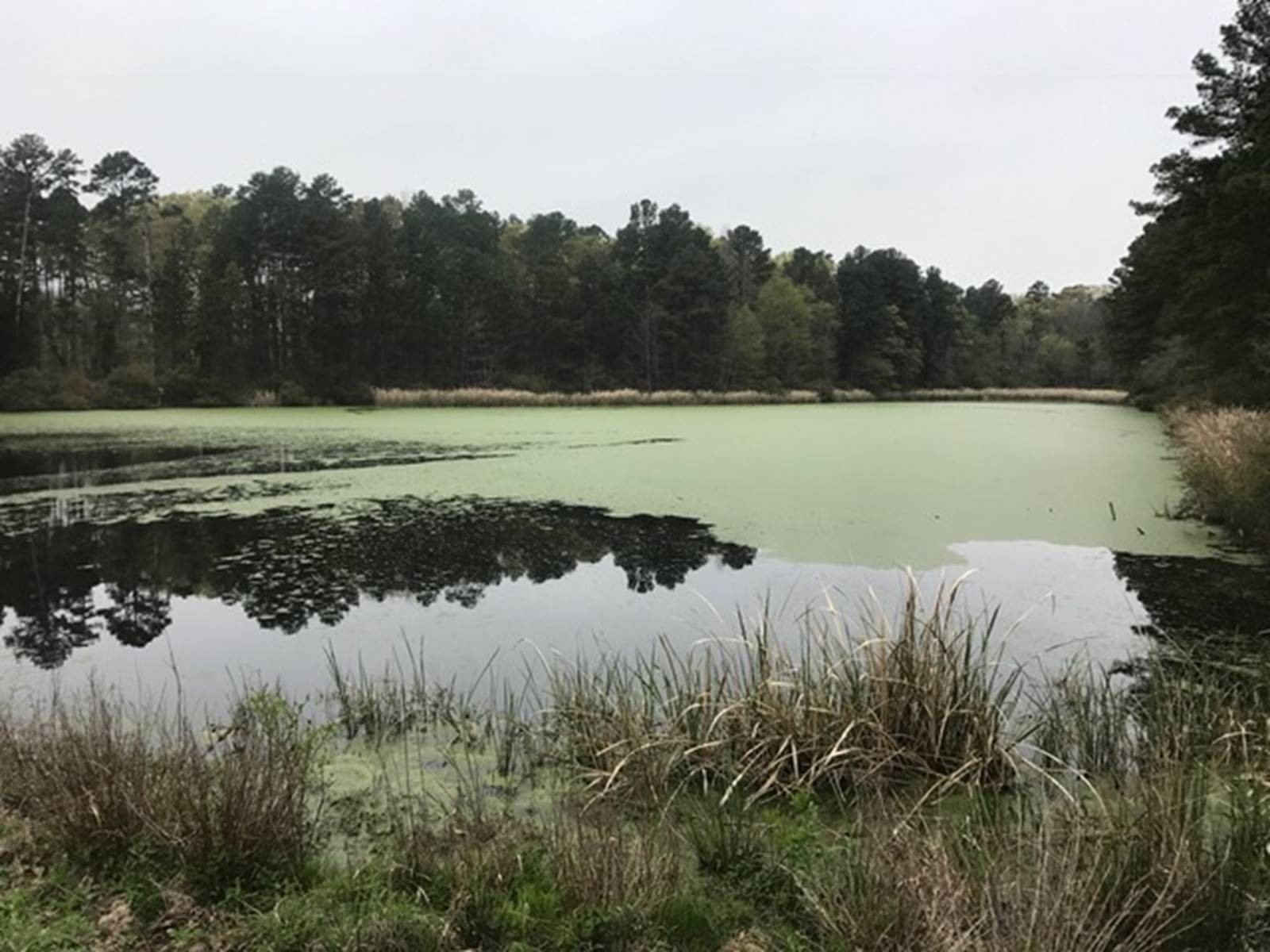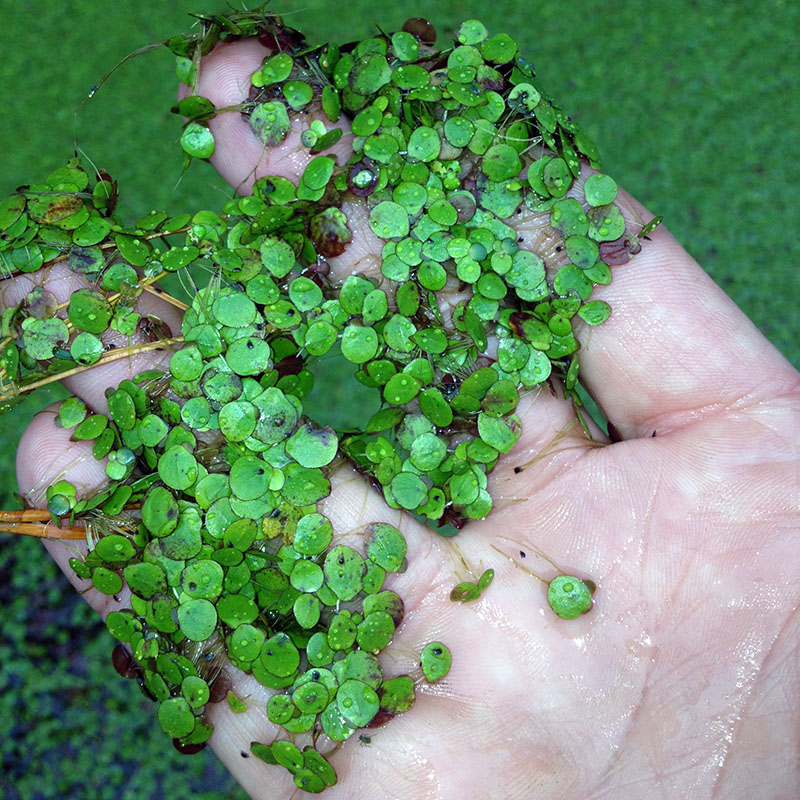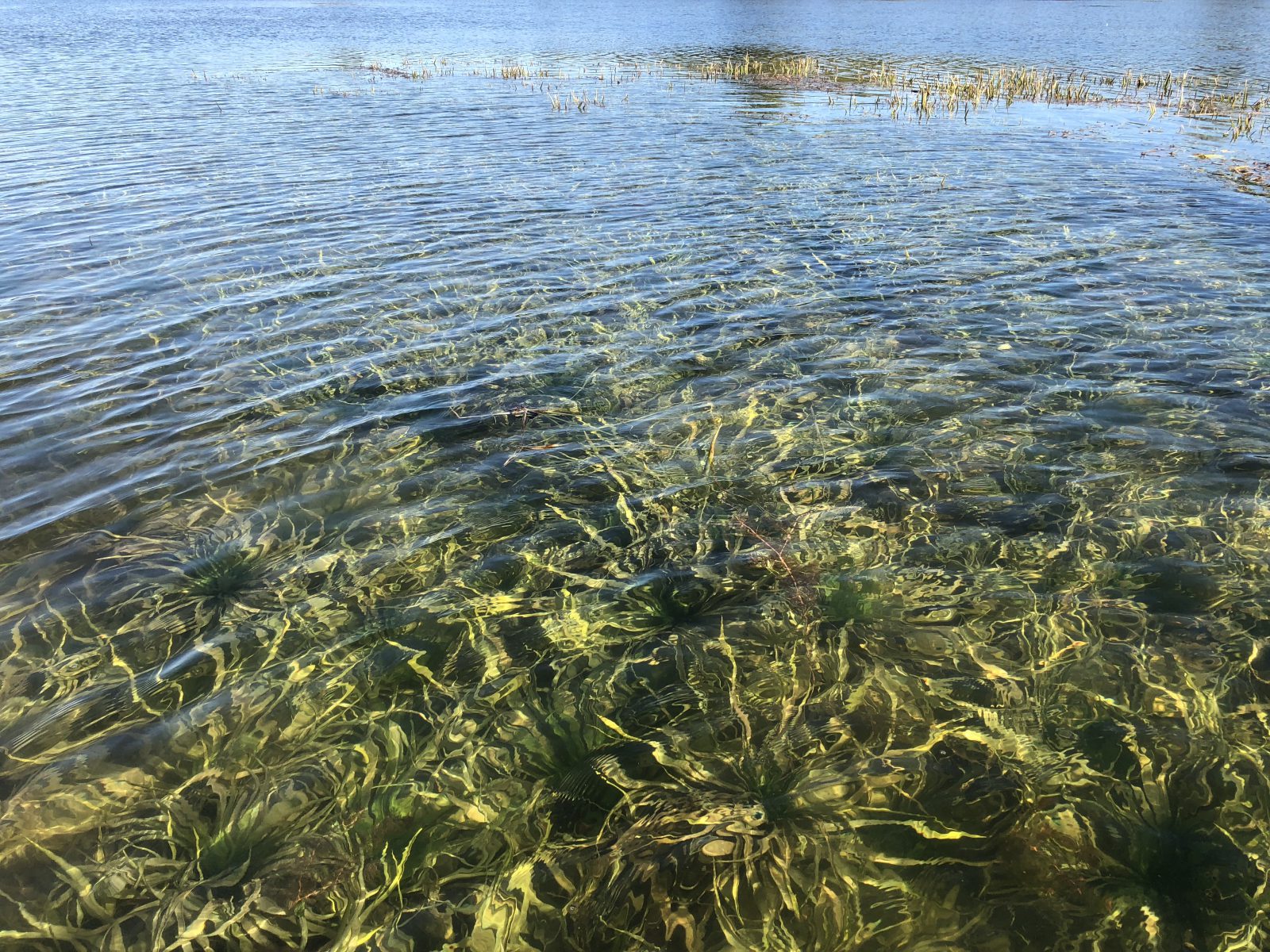
Underwater Greenery: Good or Bad?
September 25th, 2015
AS SEEN IN Pond Boss Magazine, Written by Bob Lusk
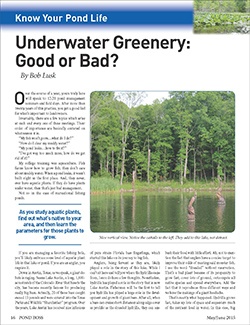 Over the course of a year, yours truly here will speak to 12-20 pond management seminars and field days. After more than twenty years of this practice, you get a good feel for what’s important to landowners.
Over the course of a year, yours truly here will speak to 12-20 pond management seminars and field days. After more than twenty years of this practice, you get a good feel for what’s important to landowners.
Invariably, there are a few topics which arise at each and every one of these meetings. Their order of importance are basically centered on what season it is.
My college training was aquaculture. Fish farms know how to grow fish; they don’t care about muddy water. When a pond leaks, it wasn’t built right in the first place. And, they never, ever have aquatic plants. If they do have plants under water, then that’s just bad management.
Not so in the case of recreational fishing ponds.
If you are managing a favorite fishing hole, you’ll likely embrace some level of aquatic plant life in that lake or pond. If you are an angler, you require it.
Down in Austin, Texas, as we speak, a giant debate is raging. Seems Lake Austin, a long, 1,600- acre stretch of the Colorado River that bisects the city, has become recently famous for producing really big bass. Actually, 20 of those bass caught exceed 13 pounds and were entered into the Texas Parks and Wildlife “Sharelunker” program. Over the years, Lake Austin has received nice infusions of pure strain Florida bass fingerlings, which started this lake on its journey to big fish.
Anglers, being fervent as they are, likely played a role in the story of this lake. While I can’t sit here and tell you where the hydrilla came from, I sure do have a few thoughts. Nonetheless, hydrilla has played a role in the story that is now Lake Austin. Fishermen will be the first to tell you hydrilla has played a huge role in the development and growth of giant bass. After all, when a bass can cruise short distances along edge cover as prolific as the dreaded hydrilla, they can ambush their food with little effort. Ah, not to mention the fact that anglers have a concise target to improve their odds of meeting said monster fish. I use the word “dreaded” without reservation. That’s a bad plant because of its propensity to grow fast, cover lots of ground, outcompete all native species and spread everywhere. Add the fact that it reproduces three different ways and we have the makings of a giant headache.
That’s exactly what happened. Hydrilla grows fast, takes up lots of space and sequesters much of the nutrient load in water. In this case, big bass were attracted to its edges and anglers were attracted to big bass.
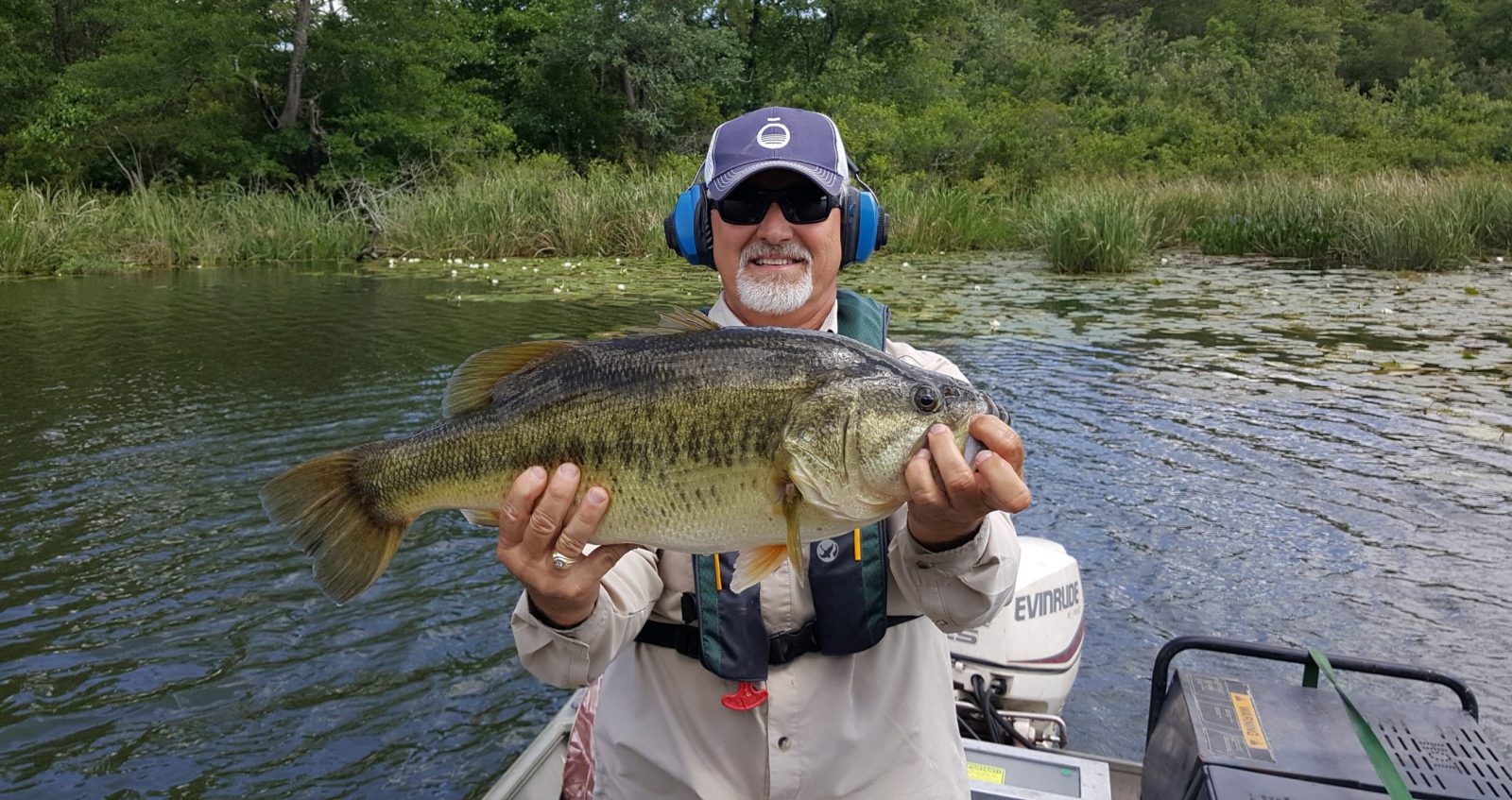
Enter the other entities, such as the City of Austin which draws water from this narrow stretch of the dammed up river so the citizens can drink and flush their toilets. Toss in an organization of anxious landowners whose shorelines looked like their lawns extended into the lake and you have the makings of a showdown. When hydrilla mats stayed in the upper part of the lake and kept mostly to itself, there wasn’t really a problem. But, when big mats moved down the lake, took root and started influencing the intake and the docks of people and their multi-zillion dollar lakefront homes, politics began to intersect biology.
Guys in glitterboats could come, fish, catch, load up and go. They didn’t care whether the hydrilla was becoming a problem…they just wanted a shot at some big bass. City fathers wanted a free intake and homeowners wanted docks free from this dense underwater salad bar. By now, after about five years, this invasive plant had covered more than half the lake, on its way to covering almost all of it.
Biologists from the city and state began to scratch their proverbial heads. The city didn’t want to use any herbicides for fear of polluting the city water supply. Shoreline residents wanted the stuff gone. The most logical approach was to use grass carp, which they’d done successfully several times before over years of ebb and flow of plant life.
They chose to add more grass carp. But, it was what they didn’t know that ended up hurting them. Due to the drought and a change in flow rate, the dynamics of the plants changed. They overstocked grass carp and within 18 months, all the hydrilla was gone. Grass carp are now reportedly snipping grass off shorelines and biting bass lures.
Anglers are up in arms. Bass catch rates are dropping dramatically and relative weights are falling because the bass had to move to open water and make an honest living chasing shad. Austin’s water tastes funny, because the fish converted hydrilla to plankton and algae. So, as you can imagine, it’s a topic of conversation on the news and talk shows in that fair city.
City fathers, along with biologists from the state, are trying to work with anglers and consultants hired by local homeowners to develop some sort of plan to bring Lake Austin back to its recent fishing glory. But, it will take lots of cooperation, some money and many years to settle the lake into what its next destiny will be.
So, what’s the lesson for you, dear Pond Boss reader?
If Lake Austin had a healthy, diverse mix of native plant species, growing in water they are accustomed to growing, this would never have been a story.
Personally, I’ve grown to love native plants. In that part of the world, eel grass with American pondweed in shallow water could be in harmony with peripheral bog plants such as arrowhead with sedges. Chara alongside bushy pondweed would also work well in a lake such as that.
As you study aquatic plants, find out what’s native to your area, and then learn the parameters for those plants to grow. Avoid floating plants. They don’t help you at all. No duckweed, watermeal or azolla—steer far away from those. You want good, rooted plants that will only grow in the shallowest water. While coontail seems like a pretty good plant because of its structure and shape, it’s actually a nuisance because its nature is to migrate through the water column, growing and reproducing as it does so. It’s not rooted, so it moves around in mats. Regionally there are different plants which grow in different soil types, acidic or alkaline waters and different temperatures.
If you want aquatic plants to play a role as habitat, then be sure you understand the nature of these plants and you can choose which different species to allow and which to exterminate or avoid. As a general rule, biologists lean toward pondweeds. American, Illinois, small-leaf, and bushy pondweed can assist what you are doing. Thinking about emerged plants? Be picky. Native cattails can grow beyond six feet tall. I’ve seen some close to ten. You can’t see the water over ten foot cattails. Think about shorter plants. Some reeds grow only two feet. Nothing sets the scene of a pond more than a beautiful shoreline and a patch of lily pads, with beautiful blooms. Careful, though. Some of those broadleaf plants grow faster than a NASCAR guy drives. Speaking of broadleaf plants, a native all around the country is creeping yellow water primrose. It starts off nicely, and has a pleasant yellow bloom, but watch it, that stuff can take over a shoreline and sneak thirty feet into a pond.
Study your options and then learn about those individual plants. Then, you can choose what to use and what to avoid. Over time, you may be the one catching giant bass along your very own edge cover…without the hoopla that Austin, Texas is having to deal with.
Bob Lusk, editor of Pond Boss Magazine, has 30+ years of practical field experience in the art of lake and pond management. Since 1998, SOLitude Lake Management has been committed to providing full service lake and pond management services that improve water quality, preserve natural resources, and reduce our environmental footprint. Lake, pond and fisheries management services, consulting, and aquatic products are available nationwide. Learn more about SOLitude Lake Management and purchase products at www.solitudelakemanagement.com.








